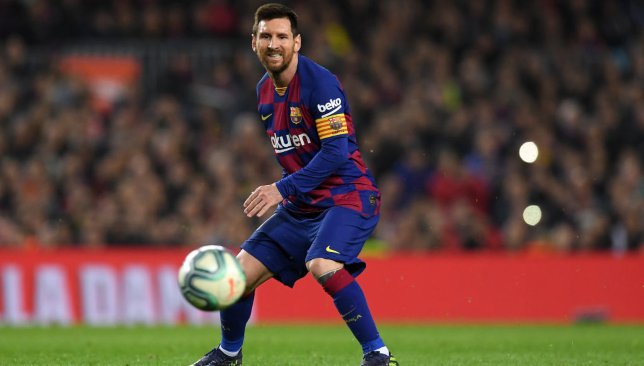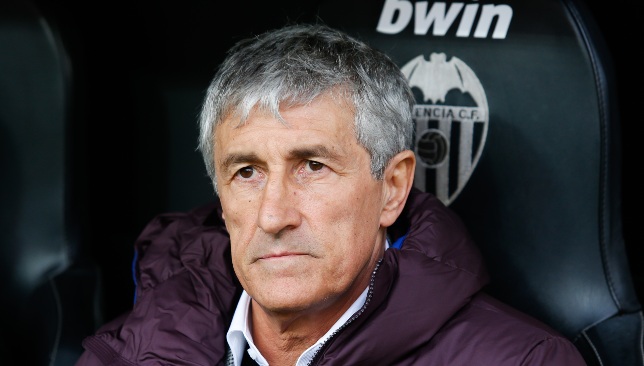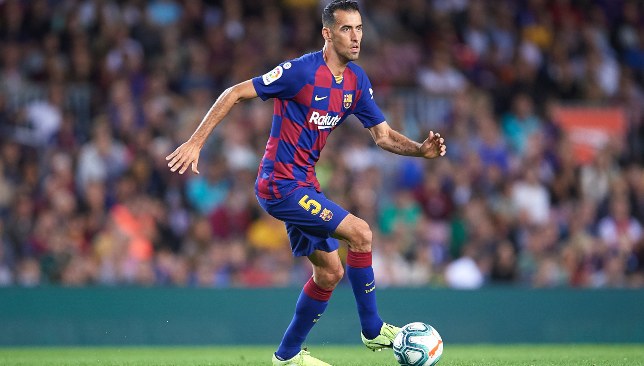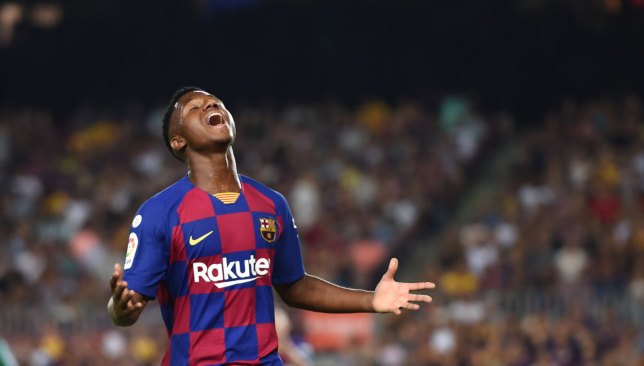
1005 passes. 1,42 expected goals. This is about what sums up Quique Setien’s opening performance as a Barcelona manager.
And, while managers often talk about attacking and defensive balance, the abysmal outing against UD Ibiza in the Cup and a convincing defeat to Valencia proved that Setien will have to set himself up with an additional task now at Barcelona – to find the right balance between possession and verticality.
We all saw it, we all witnessed it for three seasons in a row now. The team is simply incapable of escaping the opponent’s high pressing through positional football. Top-notch individual quality and Lionel Messi things bypassed this. Still, there was always a point in the season – be it Betis, Roma, or Liverpool – where the ‘give-the-ball-to-Messi’ system failed due to numerous circumstances.
However, what made Quique Setien’s appointment so exciting is the fact that the teams will no longer dare to press Barca high up the pitch for 90 minutes. At least, that was the idea. The reality, though, is that the change doesn’t come overnight. The first outing against Granada provided us with an idea and optimism. The travel to Ibiza brought some suspicion, where even the Third Division side pressed the team successfully for certain spans of the match.
And then, Valencia shattered the illusion.
So, the job now is to come up with an idea of how to turn the possession into something concrete.
Click here to read the full article on BarcaUniversal.com
You can follow BarcaUniversal on Twitter and Instagram

Barcelona and possessionless possession
Possession in itself isn’t threatening, but we absolved that. Even so, many will argue that keeping the ball means that the opponent will take fewer risks and simply have a lesser chance of scoring throughout the match. Well, the stats prove that those thoughts aren’t coming from solid ground. We saw Barcelona have the ball for 74.5 per cent of the time on average since Setien took over. This is more than the team had in any single game this season prior to his appointment.
Now, the interesting thing is that the 70 per cent possession threshold was crossed eight times this campaign (including the recent three displays). In those eight matches, Barcelona won only three times (!), beating Granada (home), Ibiza and Leganes, losing to Atletico de Madrid, Granada (away) and Athletic Club, and drawing with Osasuna. This clearly shows that the team doesn’t have the defensive transition on point. Barcelona conceded 12 goals in those eight matches.

Ageing squad
The thing is, however, that the point of the possession-based style is to defend very high up the pitch and, if only one link in the chain fails, the whole system collapses. Now, this is also an issue of an ageing squad. Lionel Messi, Sergio Busquets and Gerard Pique are all commanding their respective lines of the pitch, and all of them are physically slowing down, making it much harder to press relentlessly throughout the match. It becomes a vicious circle of desire and abilities, which is why Valverde took a lot of heat for, but it’s clear that he perfectly understood the limits of an declining squad.
An additional problem is, and it has to be said – Frenkie de Jong. De Jong in himself isn’t the issue because he possesses the same skillset as he did in Ajax, but his role in the team isn’t suited to his needs. Back in Ajax, he was part of a dynamic squad, catching his opponents off guard and making line-breaking runs from deep.
Nevertheless, in Barcelona the middle of the pitch is clogged up with a couple of players wanting the ball to feet, rather than making deep runs. As it showed, Arturo Vidal is the key for this: the Chilean midfielder provides a spark off the ball, bringing much-needed chaos into a static side and offering much more than just sheer power.
he midfield trio of Busquets, Arthur and De Jong is also very problematic for a number of reasons; the first is that none of these players has the ability to take on an opponent and act as an interior midfielder. Additionally, none of these players is suited for a physical game, which can hurt the team against fast and well-prepared counter-attacking sides. Kondogbia’s performance is a prime example of why this trio cannot cope with midfielders of this profile, and why a ‘trouble-maker’ on the pitch like Vidal is a necessity.

Do we trust Fati?
After some poor performances, Ansu Fati received a lot of criticism towards him. But, was it all warranted? Yes, it’s true that he is physically underwhelming. This doesn’t come as exactly a surprise knowing he just turned 18. Yet it feels like Ansu’s biggest strength of taking on defenders disappeared against Valencia.
What everyone loved about him from Ansu’s debut for Barcelona was his fearlessness, which seemingly vanished. Well, for starters, he was regularly introduced as a substitute while the Blaugranas were leading in the earlier stages of the season. This meant that the opposition were usually pushing higher up the pitch. It resulted in Fati having a lot more energy than his guards in the latter phases of the clashes. None of these were the factors in the latest duel.
The 3–5–2 implies that he’s often isolated on the wing, without overlap to create space for him. Against Valencia, Ansu often received the ball too far away from the goal. This is more a testament of the team’s inability to create positive situations for him than criticism towards Fati. The proof of that is only one touch in Valencia’s box for Fati. Compare this to five against Ibiza and ten against Granada, and you’ll get the impression. What surprised me, personally, is the 17-year-old’s willingness to make deep runs over and over. Even though it didn’t materialise, it showed his team-first mentality that players of his age are often lacking.
It feels unnatural to demote a gem like this to the B team, and I can’t see Setien doing so. Instead, he could be a very valuable asset going forward. Ansu Fati is able to fulfil any attacking slots that open up throughout the rest of the season.

Ansu Fati.
Changing things going forward
It’s clear that Setien’s 3–5–2 is a hill he’s willing to die on. With this being said, a couple of things need to change. The first aspect that needs improvement is offensive movement from the midfielders. They have to work off the ball more and create a more dynamic environment. More bravery in the passing wouldn’t hurt Barcelona either. The midfielders tend to hold onto the ball for too long at times, thus missing some opportunities for passes into deep. Jordi Alba and Ansu Fati’s deep runs remain unused for the most part.
An additional problem is the Griezmann–Messi partnership. As the years went by, Messi relied on having a man to play off of, with Suarez taking on the role perfectly. And now, all of a sudden, the Argentinian doesn’t have a man in front of him. The opposition crowds him easily, without fear they’ll leave space behind for an incoming striker. Griezmann’s tendency to drop deep creates even bigger congestion. The duo will have to work on this in the future. Hopefully, the board reacts by bringing on a traditional centre-forward with an ability to play with his back to goal.
All tactics aside, Dembele’s return alone should bring a lot of verticality in itself. He looks primed to take on the role of filling the right flank and shine in it. The Frenchman’s shoulders will take on a lot of burden. That said, he will get his chance to prove that Ousmane Dembele is present, and even more so, Barcelona’s future.
📰 — Ousmane Dembele may be ready for the La Liga clash vs Betis on the 9th of February. If not, he will return vs Getafe. This week he will rejoin the group in full training. [as] pic.twitter.com/EqwnVL0vKT
— Barça Universal (@BarcaUniversal) January 28, 2020